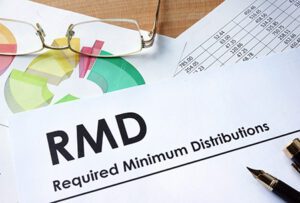Tapping into IRAs and Qualified Plan Accounts
Tapping into IRAs and Qualified Plan Accounts Clients finding themselves in dire financial straits this fall? How about tapping into their IRAs or qualified plan accounts? Better hurry – the…
November 15th, 2021
Remember that tune? I want to take this week’s offering to make a M.O.U.S.E. out of each of you!
M.O.U.S.E., you say. Why M.O.U.S.E.?
In my twisted mind, M.O.U.S.E. stands for
Make
Our
Understanding
Simply
Explained
If you decide to join our little club you just need to commit yourself to be an educator of your clients, especially in today’s rapidly changing tax law world.

Nowhere is this understanding more important than in the 2021 world of Required Minimum Distributions (RMDs) and Qualified Charitable Distributions (QCDs).
Let’s begin with a little history lesson. Once upon a time (2020 to be exact) in a response to the COVID-19 pandemic, the US Congress passed a law which gave the citizenry of our land a break from RMDs. But in addition to this break also came a change as to when people need to begin RMDs. Also, there were changes as to how long people can contribute to IRAs.
That’s where M.O.U.S.E. comes in.
The Taxpayer Who was at least Age 70 ½ on December 31, 2019
Note. Just a reminder that you may have clients who took RMDs in 2020. That’s no problem; they just didn’t have to take that RMD in 2020. It’s also too late now to put it back.
Note. Pay special attention to this rule. Many of our “mousers” think the QCD is limited annually to the RMD amount. $100,000 is the limit, per year and must be a direct trustee-to-charity distribution.
Note. With the nearly doubled standard deduction provided under TCJA, this is a powerful planning tool since most taxpayers will not benefit from direct charitable contributions anyway. Think about the impact not having to include that RMD in gross income might have on items such as taxable Social Security, Medicare premiums, deductible medical expenses, education expenses, AGI driven tax credits, etc.
Note. No start-and-stop. The law change to age 72 had no impact on our first group (the folks who were age 70 ½ or older before December 31, 2019)
Well, this group really needs your M.O.U.S.E. abilities since we have new definitions:
These persons, in essence, still have the stretch rules which allow them to take distributions over their life expectancy, single life expectancy or follow the 10-year rule. No one is prevented from just taking a lump sum which appears to happen often. Spouses in this group can choose to treat the inherited IRA as their own.
Phew! Worn out yet? Imagine how our clients feel when they call you with “a quick question” about IRAs.
The moral of the story this week is to not have your clients miss their 2021 RMDs and to offer them perhaps a better M.O.U.S.E. tax trap. The bait is set—the question remains–will your client bite or be bitten?
Stay thirsty for knowledge fellow mousers!
By Tom O’Saben, EA

Disclaimer: The information referenced in Tax School’s blog is accurate at the date of publication. You may contact taxschool@illinois.edu if you have more up-to-date, supported information and we will create an addendum.
University of Illinois Tax School is not responsible for any errors or omissions, or for the results obtained from the use of this information. All information in this site is provided “as is”, with no guarantee of completeness, accuracy, timeliness or of the results obtained from the use of this information. This blog and the information contained herein does not constitute tax client advice.
Join 1,400 of your colleagues and get notified each time a new post is added.